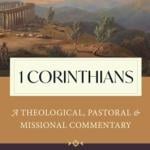From beginning to end, from Alpha to Omega, God is a God of life, a God of resurrection. In the beginning, He called into being things that were not. He cried out into the darkness of the first day, so that light dispelled the darkness. He spoke again, and plants sprang from the dead earth and fish swam in the turbulent seas. He raised up Adam from the dust to become a living soul, and He put Adam into deep... Read more















